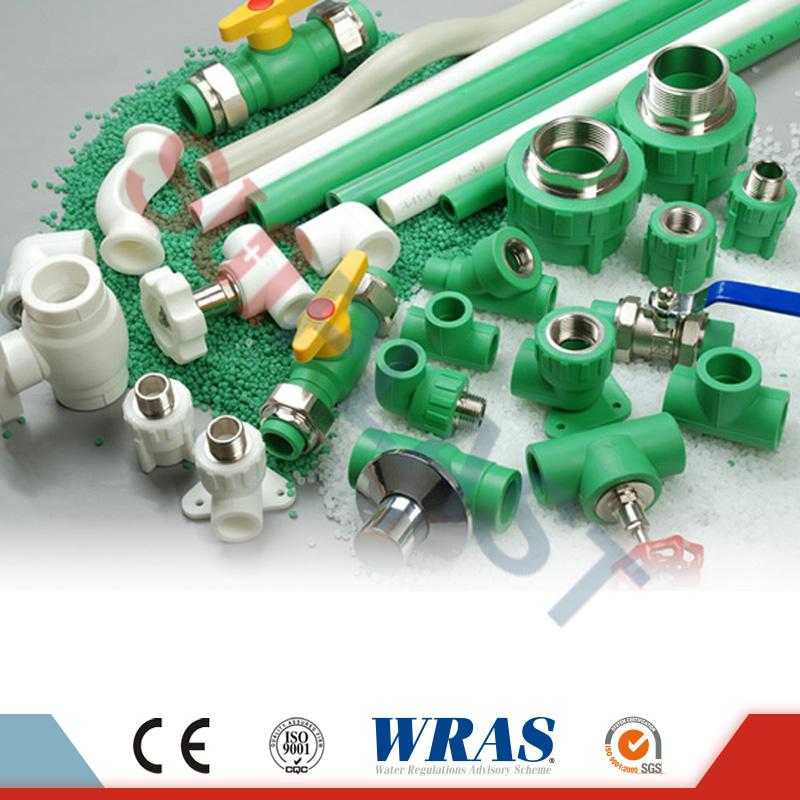
- English
- Español
- Português
- русский
- Français
- 日本語
- Deutsch
- tiếng Việt
- Italiano
- Nederlands
- ภาษาไทย
- Polski
- 한국어
- Svenska
- magyar
- Malay
- বাংলা ভাষার
- Dansk
- Suomi
- हिन्दी
- Pilipino
- Türkçe
- Gaeilge
- العربية
- Indonesia
- Norsk
- تمل
- český
- ελληνικά
- український
- Javanese
- فارسی
- தமிழ்
- తెలుగు
- नेपाली
- Burmese
- български
- ລາວ
- Latine
- Қазақша
- Euskal
- Azərbaycan
- Slovenský jazyk
- Македонски
- Lietuvos
- Eesti Keel
- Română
- Slovenski
- मराठी
- Srpski језик
Is the ppr water pipe really non-toxic and harmless?
2023-03-09
In terms of raw materials, PPR water pipes are made of polypropylene raw materials. The polypropylene raw material from regular channels is a non-toxic and harmless substance. Inferior water pipes add recycled materials to the water pipes, resulting in poor quality and harmful substances. It does not mean that PPR water pipes contain harmful substances.
Some people say that PPR pipes are plastic water pipes and contain plasticizers, but they only know that plasticizers are bad, and they don’t even know what plasticizers are.
Plasticizer, also called plasticizer, is a polymer additive added to increase the plasticity of materials. It became known to the public a few years ago because it was exposed in the food industry. But not all plastic production requires the addition of plasticizers. Plastic products such as polyethylene, polypropylene, polystyrene, polycarbonate, polyester, nylon, polyurethane, abs, etc. that are common in daily life do not need to add plasticizers in the production process. agent" does not matter. As a polypropylene material, PPR water pipes have nothing to do with "plasticizers".
Will the PPR pipes breed bacteria? We know that there are certain requirements for the quality of tap water in the municipal pipe network, and there is generally residual chlorine in tap water to kill bacteria and maintain water quality. PPR water pipes do not breed bacteria, but poor-quality PPR water pipes will breed algae due to poor light transmission.
The problem is, people often confuse bacteria, algal growth, and scale.
Some people say that PPR pipes are plastic water pipes and contain plasticizers, but they only know that plasticizers are bad, and they don’t even know what plasticizers are.
Plasticizer, also called plasticizer, is a polymer additive added to increase the plasticity of materials. It became known to the public a few years ago because it was exposed in the food industry. But not all plastic production requires the addition of plasticizers. Plastic products such as polyethylene, polypropylene, polystyrene, polycarbonate, polyester, nylon, polyurethane, abs, etc. that are common in daily life do not need to add plasticizers in the production process. agent" does not matter. As a polypropylene material, PPR water pipes have nothing to do with "plasticizers".
Will the PPR pipes breed bacteria? We know that there are certain requirements for the quality of tap water in the municipal pipe network, and there is generally residual chlorine in tap water to kill bacteria and maintain water quality. PPR water pipes do not breed bacteria, but poor-quality PPR water pipes will breed algae due to poor light transmission.
The problem is, people often confuse bacteria, algal growth, and scale.
In fact, bacteria have been strictly controlled at the water supply end. Algae plants are caused by the substandard light transmission of PPR water pipes. Scale is related to water quality and not a problem with pipelines. No scaling is impossible for any pipeline.

Previous:PPR pipe installation tips




